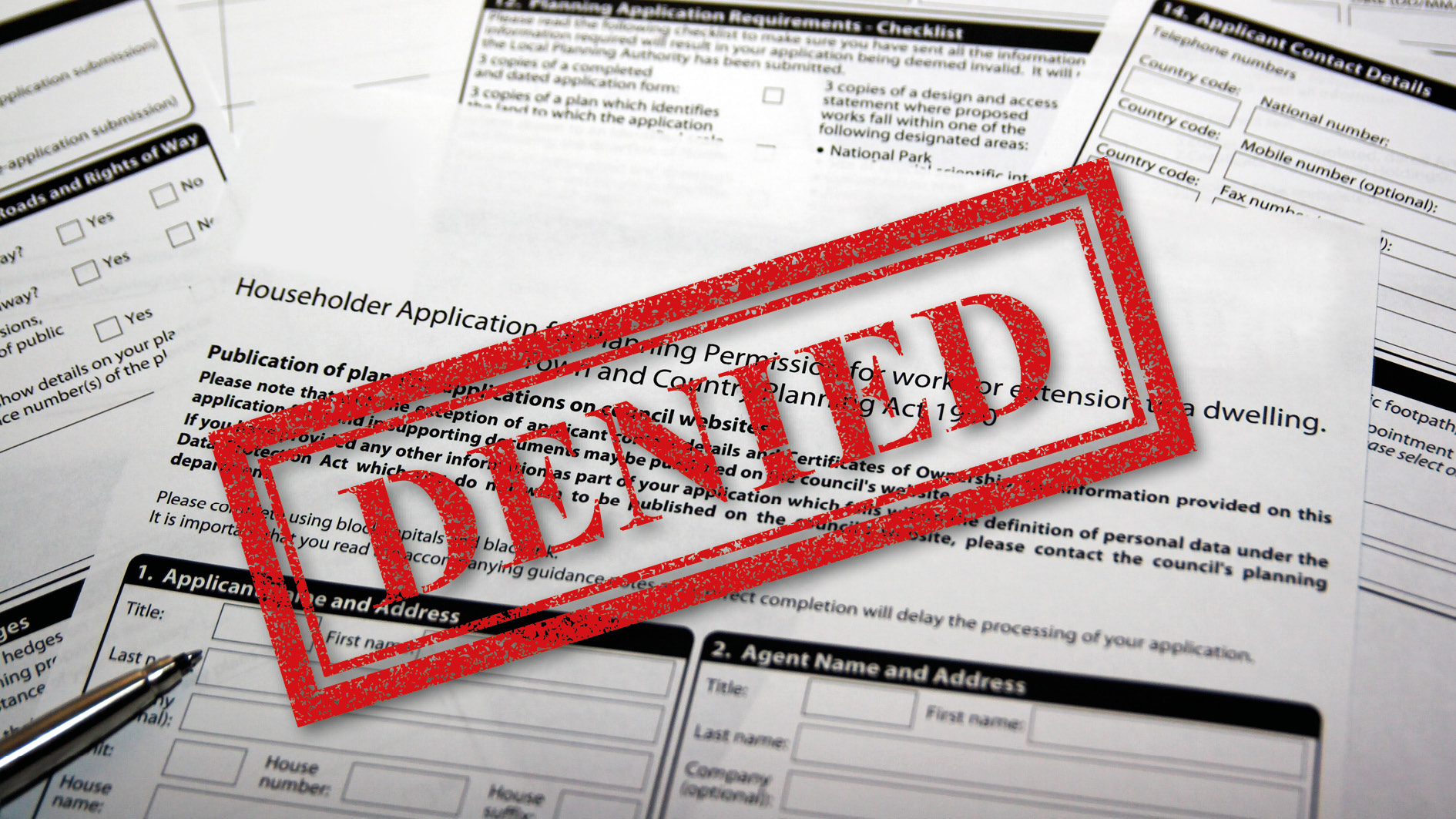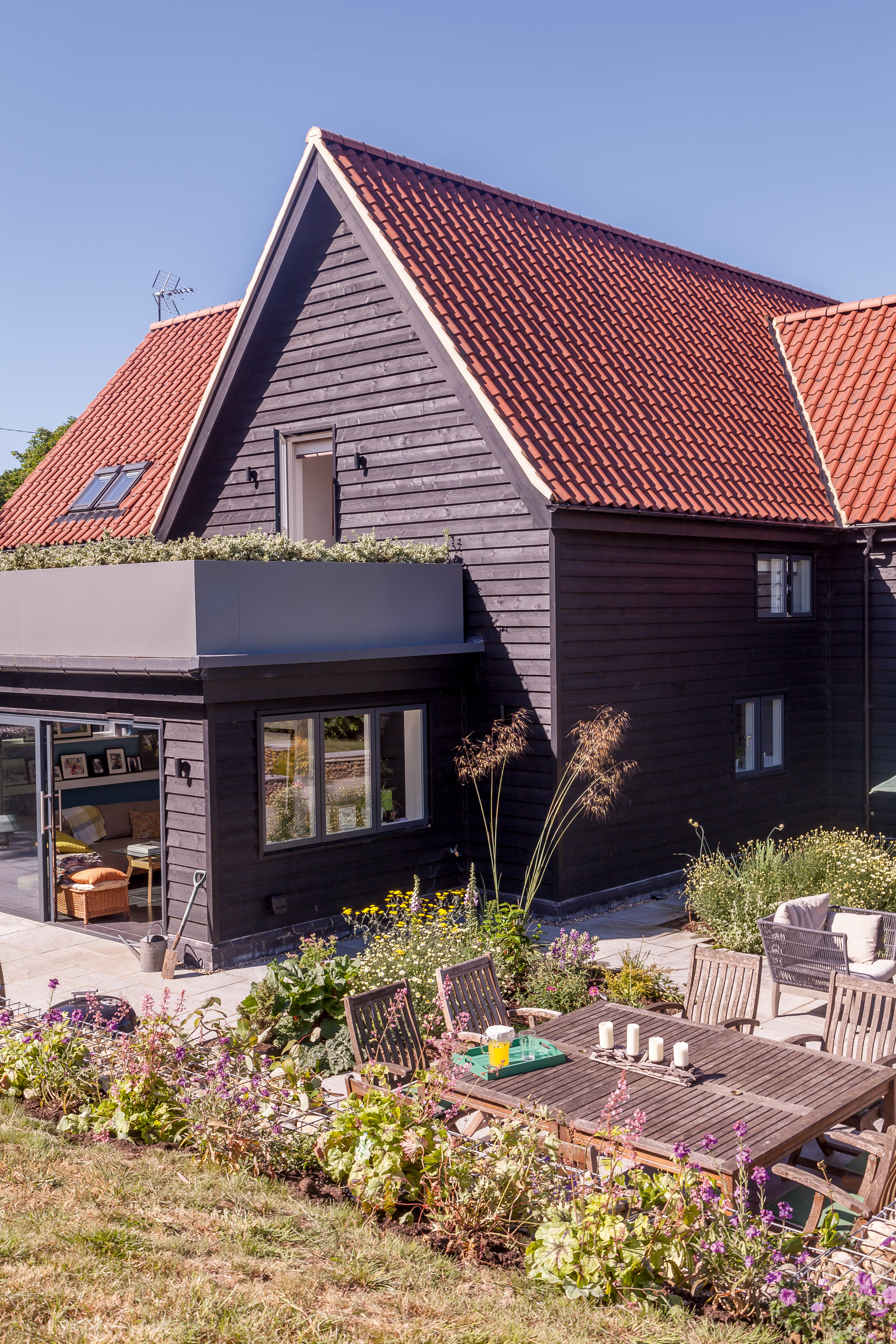Planning Permission Refused? Here's What You Should Do
Once the initial despair of planning permission refusal has subsided, should you alter your design or launch a planning appeal?

While it can be disheartening to learn you have been refused planning consent for your dream home, it doesn’t have to mark the end of your project. Once you understand the reasons for your planning refusal, you have a couple of options to consider; submitting a redesign, or launching a planning appeal.
Getting planning permission is never guaranteed. You may pay for pre-application advice, amend your scheme exactly as the planning officer requests, talk to your neighbours and take their concerns into account, and turn up to a planning committee and talk a lot of sense.
Unfortunately, even this helpful approach doesn’t remove the possibility of getting a refusal. The whole system is unpredictable and risky.
(MORE: How to Get Planning Approval)
Reasons for Planning Permission Refusal
There are two ‘types’ of reason for refusal.
One is opposition in principle to what you want to do. For example, an application for a single house on a greenfield site outside a village without special justification is likely to get refused. Regardless of the size of house, or the siting (and how visible it is), it would be refused ‘on principle’ because it’s a site that hasn’t been allocated in a development plan.
The second type of refusal is one based on detail. Perhaps you have an infill plot in a town where the principle of development is acceptable, but there is opposition to your scheme because of its height, scale, design, the position of windows or lack of parking. These are all detailed matters that should be capable of compromise and with changes allowing the planning officer to recommend approval.
Will the Planners Justify Their Refusal?
If you do get a refusal you need to understand the justification that has been given. The answer as to why is probably to be found in the local authority’s planning policies.
You will receive a Decision Notice, which will spell out in several paragraphs the reason your new house or extension is being rejected. The reasons will often be fairly short, and often quite subjective, and they will refer to local plan policies and possibly a design guide.
There will also be a publicly available officer’s report and this will explain in much greater detail (with lots of opaque planning jargon) their rationale for finding fault with your scheme.
If you’re not confident understanding all the ‘jargon’, ask your designer to take a look or a planning consultant will be able to help; if you don’t have one onboard already, now’s a good time to get one.
Redesign and Reapply
Can I Alter the Design and Reapply?
Once you have planning permission for something, this can then be used as the basis of another application where you can redesign plans closer to what you want. The local planning authority must look at the difference between what you’ve got permission for and what you now want.
Even if you get a refusal you can still reapply and hopefully respond to the concerns and overcome them.
You get a free go to resubmit if you apply for broadly the same proposal within a year. You can use the initial application as a mechanism for exposing the key issues and to gain an understanding as to what you’re likely to be able to build.
Generally speaking, it’s better to negotiate an approval by modifying a scheme than it is to get a refusal and appeal.
Case Study: Submitting Revised Plans

Carol and David Spenser ‘wrestled’ with the planners for five years to get permission to convert the barn they owned. “Our first application (in 2008) was dismissed and, after we submitted revised plans, Mid Suffolk District Council got us to do various surveys, checking for everything from owls and bats to great crested newts. Someone even had to sleep in the barn for two nights to make sure there were no bats living there!”
Carol recalls that it was a tiring, long, drawn-out process that set them back £7,000. “Halfway through the process we started to get fed up and looked for other options, but we knew if we converted this ourselves we could create a modern, stylish and eco-friendly home.”
Eventually, in 2012, permission was granted. But, because it’s a listed building, the design for the conversion had to be as close to its 19th-century origin as possible. The rotten timber frame had to remain as did the existing window and door openings.
Planning Appeals
Should I Launch a Planning Appeal?
If you don’t believe there is any room for negotiation and you’re confident that the principle of your development is not squarely contrary to planning policies, then you may want to appeal. In some cases appeals are the only answer and you can win, but you need to know how to play the game.
However, in my view, appeals are generally best avoided if you can get almost all you want through compromise. This is because it will take around six months to get a decision and the people who determine the appeals, planning inspectors, have their own opinions and it is very difficult to predict the outcome.
I’ve known appeals where an application for a house has been refused for one reason and the appeal planning inspector has decided to refuse it for an entirely different reason. So, there is a distinct possibility that an appeal decision could blight a site and make it even harder for you to redesign the scheme and get a permission in the future.
(MORE: Secrets to Planning Success)
What is the Planning Appeal Process?
So, if an appeal is the best option, there are really only two ways of doing this — either a Written Representations Appeal or a hearing.
In both procedures there are appeal forms to complete and you must provide a Statement of Case. All the documents must be received by the planning inspectorate before the expiry of six months from the date of refusal. You may feel it would be best for this appeal to be discussed in front of the inspector (who is an independent government-appointed planning expert based in Bristol) and this is where you can request a hearing.
Unfortunately, if the inspectorate does not believe a hearing is truly necessary they will not agree to it. Hearings are only normally granted when there are matters of complex fact to be investigated and discussed. For example, an enforcement appeal where people must give evidence under oath, a public inquiry would be usual. A public inquiry is highly unlikely to be needed for a single infill plot or extensions to a house. It is also expensive because you normally need a barrister.
Case Study: Going to Appeal

When Merula Frankel and her late husband Richard submitted plans to build a house in the grounds of their existing home, both the village and the Highways Agency objected. It went to appeal, which took two years. Then the appeal was upheld.
Sadly, tragedy struck and Merula was widowed following a road accident. She ‘drew a line under everything’ until 2011 when the planning consent was due to expire.
Merula took the decision to continue the dream she and Richard had. “But I knew I wanted a different design and liked the idea of using a package company who provided a turnkey service and who I could completely trust as I was naïve about the building process and needed people who could hold my hand,” she explains.
Step in package company Baufritz. They helped Merula achieve planning consent in mid 2012; the final house design is smaller than the original.
Your Written Statement of Case
The basic planning principle is that developments should be granted if they are in accordance with the development plan ‘unless material considerations dictate otherwise’.
This means that your written Statement of Case needs to follow the planning policies unless there is a very good planning reason not to — for example, the relevant polices are out of date or they are not relevant to the particular circumstances of your case.
Government advice is very important. The 2019 National Planning Policy Framework (NPPF) and associated planning policy guidance are found easily on the web and they underpin all local planning authority (LPA) decisions.
LPAs sometimes have local plans and other developing documents which are out of date and don’t accord with government advice; in which case the NPPF will take precedence.
But, do bear in mind that with small-scale individual schemes like extensions or single plots there will be an awful lot of subjective opinion and an appeal inspector may or may not agree with the opinions of the planning officers or the committee.
You cannot assume that just because a planning officer recommended approval, and the committee ignored it, that the inspector will necessarily support the planning officer’s views.
What Percentage of Planning Appeals are Successful?
Around 30% of minor single dwelling or householder extension appeals are successful and sometimes it’s possible to obtain costs from the local authority on the grounds that their decision was unreasonable.
If you’re not going to employ an expert – a planning consultant for example – and you log the appeal yourself, it’s very important to stick to relevant planning issues. Planning policies often talk about developments being ‘in keeping’ with the ‘character and appearance’ or with the ‘locally distinctive’ historic identity of an area. So subjective opinion needs to be expressed in these terms.
Personal matters are hardly ever of any interest to a planning inspector considering an appeal. Everybody has a very good reason why they would like a bigger house or a new house; sick children or elderly relatives, financial considerations etc, are all pretty much irrelevant in planning.
It is a cold hard system that pays little or no heed to personal circumstances, however dire they may be. So, stick to the arguments and demonstrate how your scheme complies with the LPA or government’s planning policies. This may sound pretty negative but planning appeals are rarely easy.
How to Avoid a Planning Refusal Altogether
Surprisingly, you don’t have to allow the LPA to refuse your application; it doesn’t need to go that far. This may sound a bit odd, but it’s legally possible to withdraw your application until just before the Decision Notice is actually issued.
Let’s say you’ve been talking to the planning office and discussions are giving you cause for concern. The ridge height of your proposed extension is raising issues. Planning officers are hinting that it’s too high in comparison to neighbouring houses and you’ve got an inkling that your proposal might get refused on this basis.
You may wish to avoid the potential blight of that refusal and have a go at redesigning it to overcome some of the objections. You can even withdraw the application after a planning committee has considered it, with a written formal request to withdraw it handed to a member of the planning department. This needs to be done before they have issued and sent out the Decision Notice so hand in your request to withdraw it as soon after the meeting as you can.
Get the Homebuilding & Renovating Newsletter
Bring your dream home to life with expert advice, how to guides and design inspiration. Sign up for our newsletter and get two free tickets to a Homebuilding & Renovating Show near you.
Ken, a former planning officer, is an experienced planning consultant with over three decades of experience helping self builders, renovators and developers achieving planning permission. He set up his own consultancy, Dijksman Planning LLP, in 2005. He is also the author of The Planning Game, How to Play the System and Win Planning Consent: An Insider's Guide to Planning Permission for Newbuilds and Extensions.

